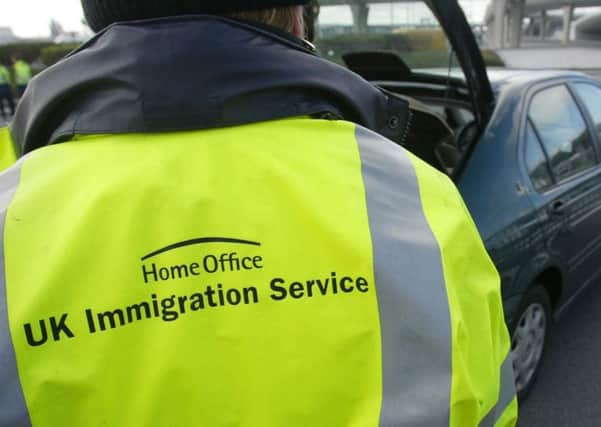Migration remains well above Government target


The measure - the difference between the number of people arriving in the country and leaving - stood at an estimated 327,000 in the year ending in March, the Office for National Statistics (ONS) said.
This was a slight fall, of 9,000, compared with the previous 12 months, and also 7,000 lower than the level recorded for the year to December.
Advertisement
Hide AdAdvertisement
Hide AdNicola White, head of international migration statistics at the ONS, said: “Net migration remains at record levels although the recent trend is broadly flat.”
The figure of 327,000 is the third highest on record, and will mean the spotlight falls once again on the Tories’ aim of reducing net migration to below 100,000.
Long-term international migrants are those who come to Britain for at least a year.
The latest official figures - the first since the Brexit vote in June - showed that in the year ending in March, net migration for EU citizens was estimated at 180,000 - down on 184,000 for the previous year.
Advertisement
Hide AdAdvertisement
Hide AdStatisticians said the change resulted from a fall in net migration of citizens from eight central and eastern European countries such as Poland and the Czech Republic which joined the bloc in 2004.
This partially offset net migration of Romanians and Bulgarians, which is now estimated to be at the record level of 61,000. Restrictions on people from the two countries working in the UK were lifted in January 2014.
Net migration of citizens from other EU nations remained similar to the previous year at 78,000.
Ms White added: “The influx of Romanians and Bulgarians has also reached a new high, although that’s offset by falls in non-EU immigration and from other central and eastern European countries.
Advertisement
Hide AdAdvertisement
Hide Ad“Work remains the main reason for migration, followed by study, which has seen a significant fall in the number of people coming to the UK for education.
“It’s important to remember that these figures only go up to the end of March and do not cover the period following the UK’s vote to leave the European Union.”